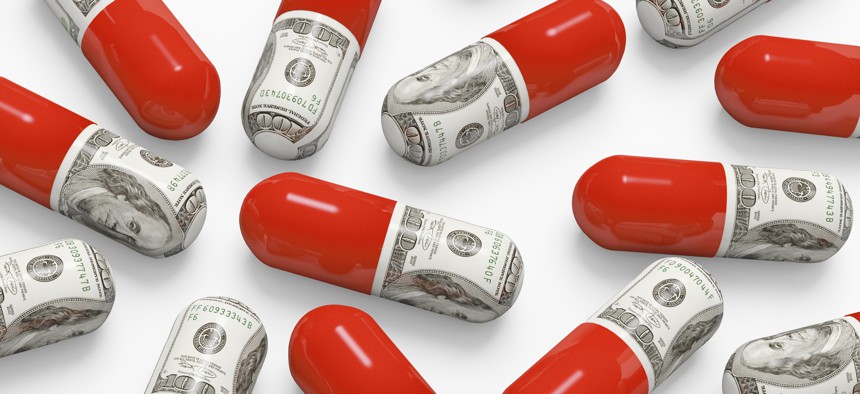Data to treat the rising cost of prescriptions

GP Kidd/Getty Images
Minnesota policymakers have new dashboards to track prescription costs in an effort to combat unaffordable medication.
To give policymakers and pharmaceutical prescription payers data to address high drug prices, the Minnesota Department of Health (MDH) launched interactive dashboards to track costs and price increases of more than 700 drugs from 200 manufacturers.
The dashboards include:
- A reporting snapshot that details the volume and types of reports from pharmaceutical suppliers that MDH received.
- A five-year price increase analysis that shows the yearly and cumulative price increases of reported drugs.
- A comparative analysis that highlights the cost of similar products.
- A new-drug report that profiles prescriptions recently introduced for sale in the U.S.
Within the dashboards, users can filter by manufacturer, therapeutic class, drug family or National Drug Code for data on specific medications.
According to MDH, drug prices rose on average 41.6% from 2017 to 2022, and a report released earlier this month found the median reported price of new drugs at market introduction was $6,612. For those drugs reported to MDH because of a price increase, the median reported price after an increase was $1,062.
“The data indicate some worrisome patterns of price inflation, and it is important to sharpen our focus on transparency and policy solutions,” Minnesota Commissioner of Health Brooke Cunningham said in an announcement. “Being able to afford your health care—including needed medications—is a critical aspect of well-being and peace of mind.”
The dashboards were created through the 2020 Prescription Drug Price Transparency Act, which required MDH to develop a system for drug manufacturers to report on the prices of new drugs and cost increases of existing medications. The effort falls under Minnesota’s Prescription Drug Price Transparency initiative to promote the transparency of pharmaceutical pricing and spending trends to assist the state in managing prescription drug costs, officials said.
“These data will help us understand how prices are impacted throughout the supply chain and whether discounts are ultimately passed on to consumers,” MDH State Health Economist Stefan Gildemeister said. “That will give legislators actionable evidence to improve affordability of prescription drugs.”
Future efforts to enhance data outcomes include improving the quality of data submitted by manufacturers, the use of “trade secret” designations to shield relevant information from public scrutiny and broadening the type and number of drugs about which data is collected.
NEXT STORY: Demand Heats Up for Grants Management Solutions






